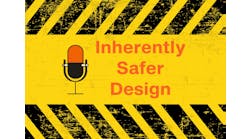On Feb. 9, 2015, the U.S. Occupational Safety and Health Administration (OSHA) published the Enforcement Guidance for the Hazard Communication Standard (HCS) effective June 1, 2015. The Guidance offers important insights into OSHA’s HCS enforcement strategy with regard to mixtures, and is therefore a must-read for stakeholders if they wish to be in the best possible position to avoid enforcement consequences for non-compliance with the HCS.
Background
On May 26, 2012, OSHA issued a final rule modifying its HCS to conform to the United Nations’ Globally Harmonized System of Classification and Labeling of Chemicals (GHS), Revision 3. In the final rule, OSHA has drastically modified the process by which hazards are classified and the elements required on Material Safety Data Sheets (MSDS), now called Safety Data Sheets (SDS), as well as labels. The regulatory implementation phase is currently underway with the deadline for all labels and SDSs to meet the new criteria by June 1, 2015 for everyone except distributors who may ship products with the old labels until Dec. 1, 2015. The enforcement Guidance provides industry with specific and detailed insight regarding how OSHA intends to address compliance with respect to the hazard determination for mixtures.
Key Points
The Guidance indicates OSHA will exercise enforcement discretion, allowing a reasonable time period for manufacturers or importers of mixtures to comply — providing they demonstrate with thorough documentation “reasonable diligence” and “good faith efforts.”
Documented efforts, according to the Guidance, include the manufacturer or supplier demonstrating an attempt to obtain HCS 2012-compliant SDSs and labels from their upstream suppliers, and demonstrating that no other source of information is available to make these hazard determinations without the upstream supplier providing details. The demonstration that the supplier was unable to make a hazard determination in the absence of the upstream SDS or label must include documented evidence of an inability to obtain information from alternative sources, including utilization of alternative documentation (alternative suppliers’ SDSs or labels) or utilization of information located within “the full range of available scientific literature and other evidence concerning the potential hazards,” as indicated in 29 C.F.R. § 1910.1200(d)(2).
Documentation of these efforts also must include written accounts of continued exchanges with upstream suppliers, as well as continued communication to potentially impacted downstream users as to why HCS 2012 compliance was not achieved. OSHA is clear that once information is received, suppliers must adhere to the requirements to update SDSs and labels within the timeframes specified in 29 C.F.R. § 1910.1200(f)(11) and 29 C.F.R § 1910.1200(g)(5).
“How To” Guide
The Guidance is a useful and relatively explicit “how to” for persuading OSHA to exercise its enforcement discretion in cases where the fast-approaching June 1 HCS effective date can’t be met. Manufacturers and importers must be in a position to demonstrate proper due diligence in seeking information for the purposes of classification and labeling. This documentation must demonstrate that their research resulted in no available information and, therefore, the only alternative was to wait for updated SDSs and labels from their suppliers. Contemporaneous written, recorded evidence must be generated to enable OSHA to exercise enforcement discretion.
The key here is documentation. The supplier must demonstrate exhaustive efforts to obtain not just their upstream suppliers’ SDSs and labels, but also that no alternative exists for hazard determination. Manufacturers and importers should continue to work on achieving compliance by the June 1, 2015, deadline. The Guidance provides comforting advice to regulated entities on how to minimize enforcement consequences if they are unable to procure the necessary information by the deadline. However, failure to demonstrate such efforts will likely end badly. The Guidance is available at http://goo.gl/SKo72y.



